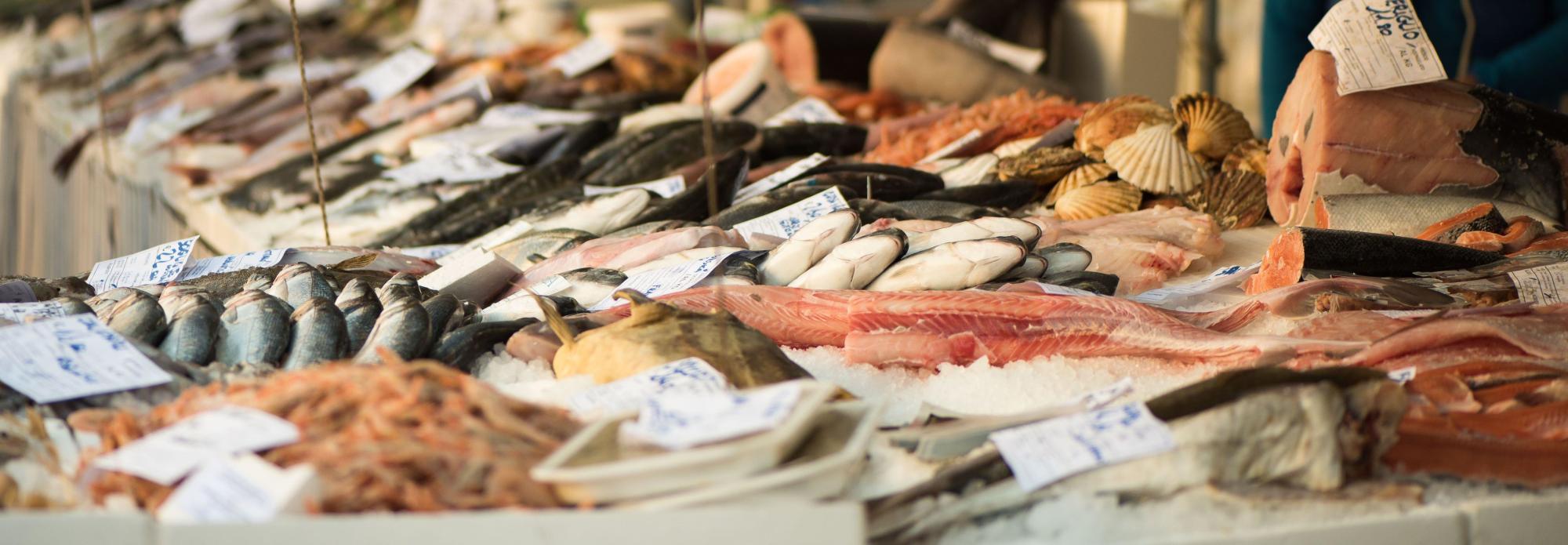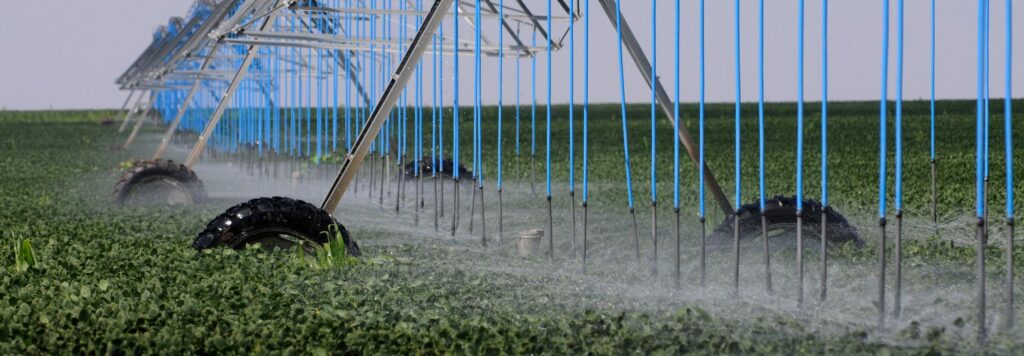The ocean provides a vital source of protein and nutrition for more than 3 billion people, including many living in the world’s most vulnerable communities. Known as “blue food,” animals, plants or algae that are caught or cultivated in freshwater and marine environments, offer enormous untapped potential to tackle food insecurity and malnutrition. There’s even the potential for it to reduce greenhouse gas (GHG) emissions. But blue food must be managed sustainably.
For many consumers, eating seafood is a more responsible alternative to land-based protein like beef or pork. A pescatarian diet is considered both to be a healthy choice and better for the environment than a traditional omnivorous diet.
However, unsustainable practices within the seafood supply chain are creating a myriad of negative environmental impacts. This includes depleted fish populations, habitat damage and loss, high incidents of bycatch (where other species, sometimes endangered, are caught alongside the target catch) as well as pollution and disease outbreaks within farmed fish populations. These practices can also be incredibly wasteful, with recent research from the World Economic Forum in collaboration with WRI showing at least 15% of fish and seafood in our food chain goes to waste.
With harmful actions like these, how can consumers be sure they are eating responsibly sourced seafood? There are currently two ways to recognize sustainable seafood at the market: sustainability certification and seafood rating systems.
- Certified foods are voluntarily put forward for certification by companies and have a label on the end-product signifying that an independent organization has verified that responsible or sustainable practices have been used throughout the entire production process. For example, there are certifications such as the Aquaculture Stewardship Council (ASC) and Best Aquaculture Practices (BAP) that certify “responsibly farmed” seafood, while wild fish certifications, such as the Marine Stewardship Council (MSC) certify “sustainable fishing.”
- Rating systems take a different approach and assess key commercial species to provide information on performance of fisheries and aquaculture.
But there are limitations to both these options. Only 49% of blue food is currently certified or rated, meaning the sustainability of 51% of seafood is unknown. And further, certification standards have been criticized for conflicts of interest in the certification model as well as the expensive and complicated process which excludes some small-scale producers.
Rating systems have also been challenged for their non-granular assessment of whole markets, unable to account for differences between individual producers. In addition to the often-limited criteria used to analyze seafood in rating systems, these systems do not include indicators to assess a product’s carbon footprint.
A More Holistic Approach to Sourcing Seafood
Given the challenges of determining whether seafood is sustainable, here are four key factors to help consumers make more informed decisions:
1) Consume Species with a Lower Environmental Impact
Protein from the sea generally has a lower carbon footprint, than other animal proteins, but there are varying levels of carbon efficiency in seafood production.
For example, wild caught fish are a low carbon food, with a carbon footprint of between 1 kilogram carbon dioxide (kg CO2) to 5 kg CO2 per kilogram (compared to beef which generates around 60 kg CO2 per kilogram), while farmed fish are estimated to produce 4 kg CO2 to 6 kg CO2 by the same measure. However, there are other environmental factors at play, such as how the fish is caught — for example whether it’s line caught or trawled. Bottom trawling is a commercial fishing method that uses a large net to catch fish along the seafloor and can destroy seabed environments.

Environmental impacts of farmed species can also vary significantly. “Fed” species such as salmon, shrimp, trout and seabass, generally have higher carbon footprints than seaweeds and bivalves because of the fish feed used. It has been estimated that the fish feed can contribute up to 80% of the carbon footprint of farmed animal and seafood production.
However, across all blue food, farmed seaweeds and bivalves such as oysters, mussels and clams, generate the lowest GHG emissions, followed by small pelagic fish such as herring, sardines and anchovies.
In addition to their low carbon footprint, seaweeds and bivalves can also benefit ecosystems. They absorb nutrients such as nitrogen and phosphorous which, in excess, can damage other aquatic life due to a process called eutrophication. This process can spur the fast growth of organisms that deplete oxygen levels in the water and then die off, leaving those areas unsuitable for other kinds of aquatic life. Moreover, seaweeds can act as ecosystem engineers on coastlines, providing habitats within seaweed farms that act as a refuge for other marine life such as fish, invertebrates and mammals.
2) Embrace Seafood Diversity
Aquatic species are incredibly diverse. With almost 250,000 known marine and at least 100,000 freshwater species, only about 3,650 species are actually eaten. Most are fish, which contain high quantities of micronutrients such as B12 and globally provide the dominant source of omega-3 fatty acids. However, less-consumed species groups such as seaweeds, aquatic invertebrates (crab, lobster and crayfish) and bivalves (clams, mussels and oysters) contain a range of nutritious compounds including dietary fiber, vitamin E, vitamin C, iodine and iron, which are associated with a variety of health benefits.
Despite the benefits of a more diverse blue food diet, only a small number of species dominate kitchens, particularly in high-income countries. For example, in the United Kingdom, five species — cod, haddock, salmon, tuna and prawns — account for 80% of the seafood consumed. However, this varies globally, with consumption in Asia showing a much wider palate for seafood species.
When multiple sustainable options are available, it’s important to consider purchasing a variety of products rather than sticking to one product consistently. Studies have shown that policies that enhance the diversity of blue food production are critical to building resilience against negative impacts associated with climate change, trade or the emergence of new diseases within food stocks. Incorporating a diverse range of blue food into diets offers many personal and societal benefits:
- Nutritional Variety: Different species of blue food provides a wide array of nutrients promoting overall health and well-being.
- Ecological Balance: Supporting a diverse range of aquatic species helps maintain biodiversity in marine ecosystems. This can also alleviate pressures such as overfishing or poor management strategies on overexploited species.
- Food Security: Promoting consumption beyond a few popular species to include other sustainable options helps promote food security, particularly for communities that rely on seafood that’s threatened by global warming and ecological shifts.
- Cultural Preservation: Embracing a variety of blue food allows communities to celebrate and preserve culinary traditions from diverse cultures around the world.
3) Eat the Whole Fish
A significant amount of the global edible aquatic food loss and waste — totaling approximately 23.8 million tons in 2021 or around 15% of the total amount of seafood produced that year — comes from by-products, including heads, internal organs, skin, bones and scales.
Consumer preferences, however, tend to avoid these fish parts, despite the nutritional benefits from bioactive compounds including long-chain omega-3 polyunsaturated fatty acids, protein, peptides, enzymes and collagen as well as key vitamins and minerals.
Beyond fish fillets lie a varied and nutritionally complex set of by-products which are undervalued in many countries’ cuisines. Examples of this changing are on the rise, with crispy fish skin gaining popularity in some regions along with increased interest in the home cooking of mass-produced products like fish stock or broth, which is often made using all the discarded parts of a fish.
However, there are cultures that traditionally eat multiple parts of the fish. One example is the culinary culture of Japan where fish cuttings, such as heads, bones, gills and fins left over from other fish dishes such as sashimi, are added to a soup to make arajiru, seabream and yellowtail heads are grilled, tuna eyes are sold in supermarkets, and livers and roes are consumed as sushi and sashimi. Embracing culinary traditions that utilize a variety of fish parts can significantly reduce waste while maximizing nutritional benefits.
To pursue this further, consumers can engage with culinary traditions that use a variety of aquatic food parts, learn how to cook a whole fish, try recipes that use different by-products or purchase products that use less desirable parts such as fish liver pâté or fish skin crisps.

Local and coastal communities, as well as professionals working within the food industry, should work to understand where waste can be cut in addition to highlighting the use of more sustainable options when possible. This is already happening to varying degrees with ‘zero-waste’ restaurants on the rise and some chefs who are moving away from popular, globalized species such as farmed salmon in favor of more sustainable options. But more is needed to scale similar sustainable actions.
4) Buy Local, Sustainably Managed Fish
Seafood is a highly traded commodity, and often travels far distances to reach consumers. Farmed salmon is one example that is now available in nearly every corner of the world, but its production and transportation can carry a hefty environmental toll.
The seafood industry was confronted with this during the COVID-19 pandemic when supply-chain disruptions caused reduced exports along major trade routes. This sparked an increase in local sourcing. Initially as an effort to sell surpluses of locally-produced seafood, more and more countries are continuing to encourage consumers to buy regional seafood products.
Buying locally provides a way for consumers to reduce their carbon footprint while bolstering local economies. However, buying locally doesn’t guarantee that products are managed sustainably. Consumers should always ask where the products come from, and how they are caught.

Taking Steps Toward a Sustainable Seafood Diet
Being a sustainable seafood consumer can be challenging, but these basic guidelines will help balance sustainable procurement with maintaining a healthy diet. It’s important to remember the level of sustainability of a food group and how it’s sourced is a constantly evolving issue.
Tools from trusted organizations are available to help navigate trends and best practices, such as Seafood Watch from the Monterey Bay Aquarium, the WWF Southern African Sustainable Seafood Initiative list or the ASC, among others, to help make informed decisions.
By embracing the diversity of blue food and considering the impact of species and sourcing, consumers can play a vital role in driving a more sustainable future for this essential natural resource.












